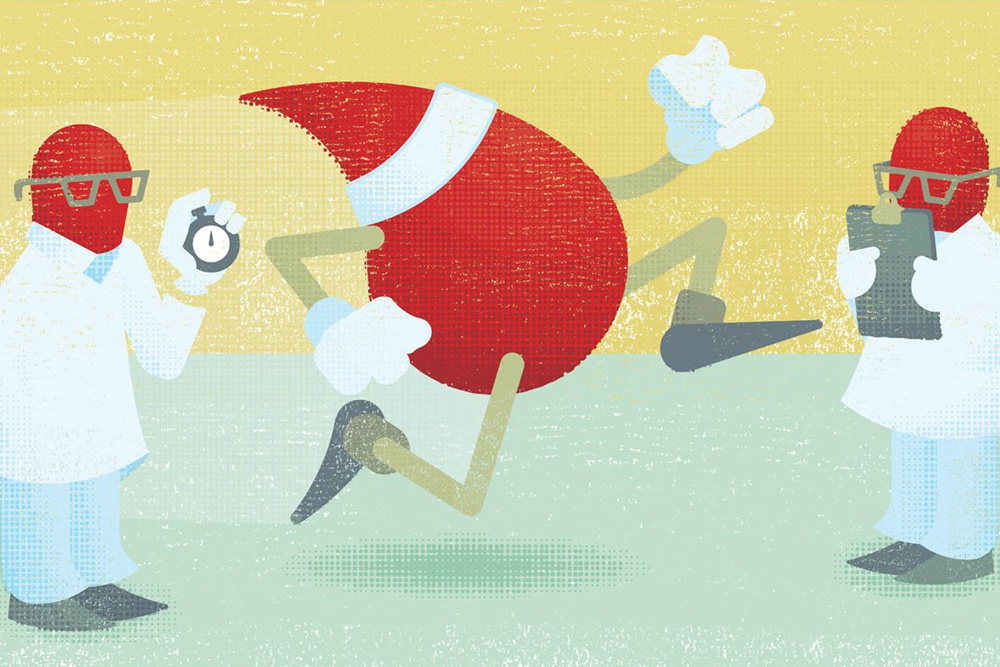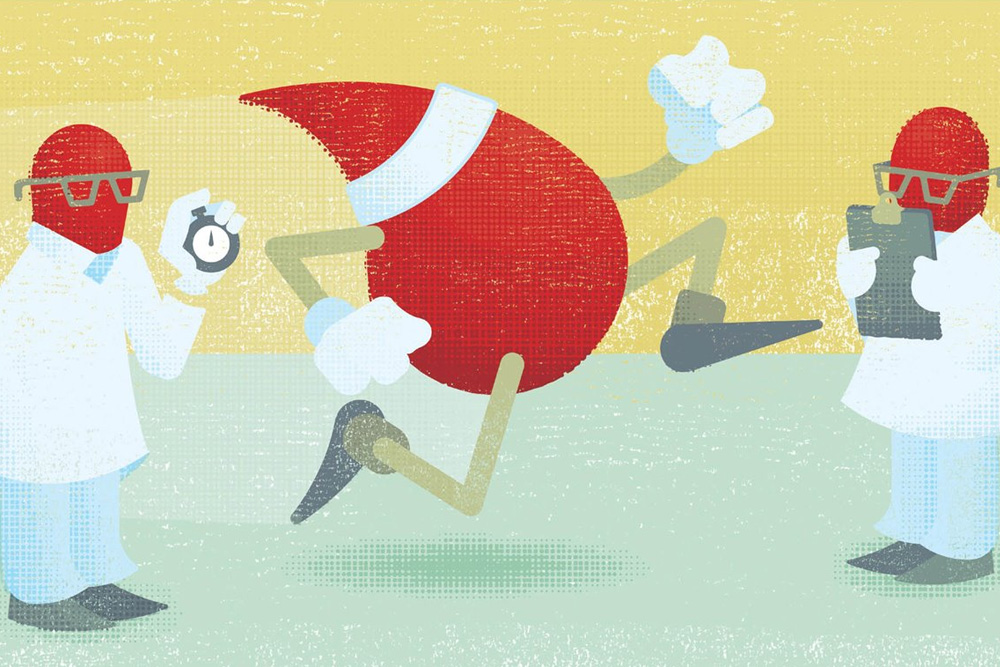
How NAIT followed the blood to find new efficiencies for Alberta Health.
Sometimes costs need to be counted drop by drop and minute by minute - especially when it comes to the long-term sustainability of the health-care system.
That's why Alberta Health asked NAIT to help identify the costs associated with getting a unit of blood transfused to a patient from the time it was delivered to the hospital by Canadian Blood Services. It had never been done before and required specialized skills. "The diverse expertise that NAIT could offer was above and beyond what either Alberta Health or AHS had available," says Samantha Cassie, manager of the province's blood coordinating program.
The result, she adds, was a "robust, detailed and user-friendly costing tool" that will help them take advantage of efficiencies.
"This was a relatively large, complex thing to track," said Dr. Olle Lagerquist, associate dean of applied research in NAIT's School of Applied Sciences and Technology. Lagerquist, the project's principal investigator, assembled a team with skills in accounting, IT, business administration as well as several lab technologists.
Once Canadian Blood Services delivers a unit of blood to a hospital -in this case the Edmonton Royal Alexandra Hospital in 2014 - it travels a complex path where it may be tested and stored numerous times before it reaches a patient.
"You have nurses involved, you have porters, you have technicians, technologists and an awful lot of equipment," said Lagerquist.
The NAIT team tracked the process onsite, using stopwatches to record the time spent on each test and converting that to labour costs. They also recorded equipment used and discarded, such as the number of latex gloves. The number of times the blood was tested and stored was also tracked, as well as how often it was transferred, how long it took and even by whom working at what pay scale.
The rigour in the study was important, says respiratory therapy instructor and project researcher Graham Werstiuk (Respiratory Therapy '06). "In order to make decisions, you need to have some good, hard data of what it actually costs the system."
The final cost: $7 million for 10,475 units of blood, 99 per cent of which were transfused into patients. That's $666.10 for each unit, which includes the $423 paid to Canadian Blood Services per unit and $243.10 in costs to transfer, refrigerate, store, test and transfuse. More than 42,000 latex gloves were used in the process.
Cassie says Alberta's blood coordinating program now has the information it needs to make informed decisions to improve processes. "We were pleased with the costing tool and hope to use it in other scenarios, such as regional or rural sites," she says. They've even shared the results with health-care colleagues in Ontario.
In the coming months, the NAIT team hopes to start work on tracking the process in health-care facilities in smaller centres.
Share this page:

Drop by Drop
How NAIT followed the blood to find new efficiencies for Alberta Health
Share on Facebook